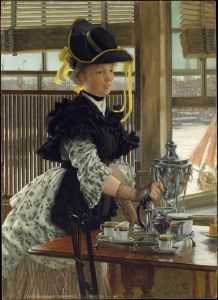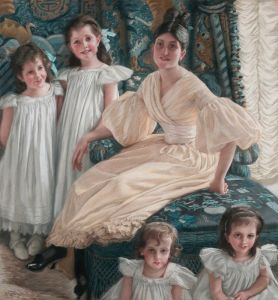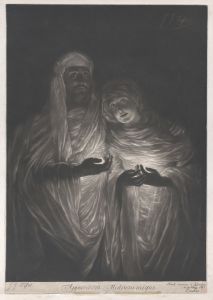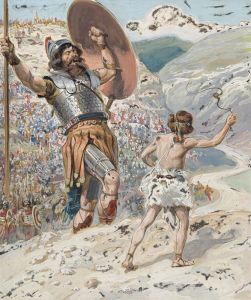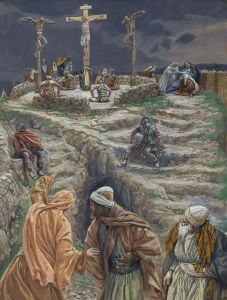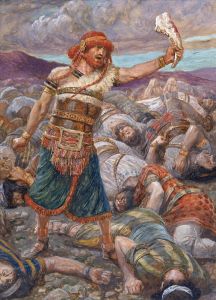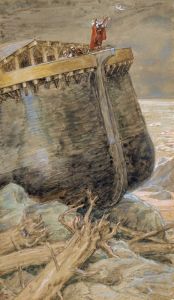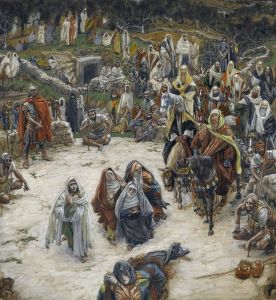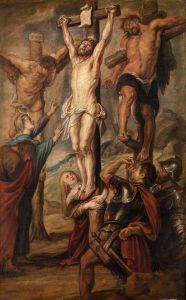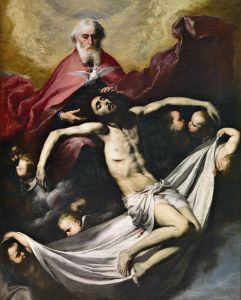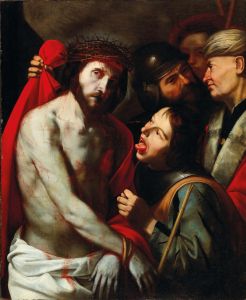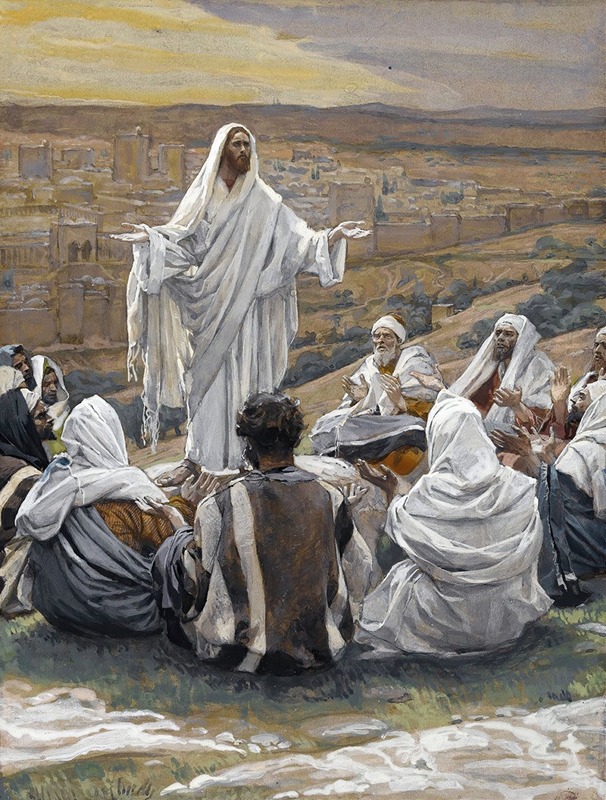
The Lord’s Prayer
A hand-painted replica of James Tissot’s masterpiece The Lord’s Prayer, meticulously crafted by professional artists to capture the true essence of the original. Each piece is created with museum-quality canvas and rare mineral pigments, carefully painted by experienced artists with delicate brushstrokes and rich, layered colors to perfectly recreate the texture of the original artwork. Unlike machine-printed reproductions, this hand-painted version brings the painting to life, infused with the artist’s emotions and skill in every stroke. Whether for personal collection or home decoration, it instantly elevates the artistic atmosphere of any space.
James Tissot's painting "The Lord’s Prayer" is a notable work by the French artist, who is renowned for his detailed and evocative religious paintings. Tissot, born Jacques Joseph Tissot in 1836, initially gained fame for his portraits and genre scenes depicting the fashionable society of Paris and London. However, in the latter part of his career, he turned his focus to religious themes, producing a series of works that illustrate scenes from the Bible.
"The Lord’s Prayer" is part of Tissot's ambitious project to illustrate the life of Jesus Christ, which he undertook after experiencing a religious awakening in the late 1880s. This project culminated in the creation of a series of watercolors known as "The Life of Christ," which was completed between 1886 and 1894. Tissot traveled extensively to the Middle East to study the landscapes, architecture, and people, aiming to bring authenticity and historical accuracy to his depictions of biblical events.
In "The Lord’s Prayer," Tissot captures a moment from the New Testament where Jesus teaches his disciples how to pray. This scene is derived from the Gospels of Matthew and Luke, where Jesus provides the prayer that has become central to Christian liturgy. Tissot's portrayal is characterized by its attention to detail and the serene, contemplative atmosphere that surrounds the figures. The composition typically reflects Tissot's commitment to historical accuracy, with careful attention to the clothing and setting that would have been appropriate for the time.
Tissot's religious works, including "The Lord’s Prayer," are distinguished by their use of watercolor, a medium that allows for delicate and nuanced expressions of light and color. His technique involves layering washes to create depth and texture, which enhances the spiritual and emotional impact of the scenes. The artist's dedication to realism and his meticulous research into the historical context of the biblical narratives lend his works a unique authenticity that was highly regarded by his contemporaries.
The series "The Life of Christ," including "The Lord’s Prayer," was first exhibited in Paris in 1894 and later in London and New York, where it received widespread acclaim. The works were eventually acquired by the Brooklyn Museum in New York, where they remain an important part of the museum's collection. Tissot's illustrations have been influential in shaping visual interpretations of biblical stories and continue to be appreciated for their artistic and historical significance.
James Tissot's "The Lord’s Prayer" exemplifies his transition from a painter of modern life to a dedicated illustrator of biblical history, reflecting both his personal spiritual journey and his artistic evolution. The painting remains a testament to Tissot's skill in combining narrative detail with emotional depth, offering viewers a window into the sacred moments of Christian tradition.






